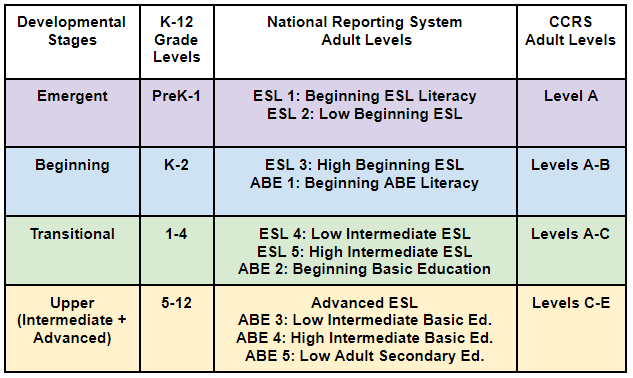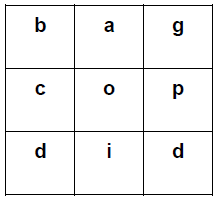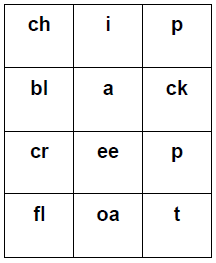- MN ABE Connect
- Archive
- Developmental Word Study: Part 1
 December 7, 2020
December 7, 2020
Developmental Word Study: Part 1
Marn Frank, ATLAS Literacy & STAR Coordinator Kristine Kelly, ATLAS Literacy & ELA CoordinatorDuring October and November, the University of Minnesota’s Center for Reading Research (MCRR) hosted a series of five webinars focused on developmental word study. This article begins by summarizing the keynote presented by Dr. Donald Bear, Professor Emeritus in Literacy Studies and co-author of the Words Their Way™ series. It continues with characteristics of Emergent and Beginning Level Readers and a variety of ideas and resources for remote instruction from MCRR faculty, ATLAS staff, and MN ABE teachers. A second article will share characteristics, ideas, and resources for teaching Transitional and Upper Level Readers. Although the MCRR webinar series was focused on K-12 literacy, both articles are intended for adult literacy practitioners.
Dr. Bear describes developmental word study as the integration of three layers:
- phonology or alphabetic pattern knowledge
- orthography or spelling pattern knowledge
- morphology or word meaning knowledge
An intentional weaving of word reading, spelling, and meaning study not only builds more automatic word recognition, but also reading and writing fluency and text comprehension. He recommends modeled and guided word sorting, an analytical instructional approach where students apply known or taught patterns to identify unknown patterns; thus, they learn new or unfamiliar “words their way.”
The table below displays Dr. Bear’s four stages of developmental word study or his “Synchrony of Literacy Development” and K-12, NRS, and approximate CCRS Levels.

Emergent Level Readers
Emergent Level Readers may need Print Concepts, the visual skills connecting spoken to written language: left>right, top>bottom, page>page, letters=words, words=sentences. They may also need Phonological (or auditory) Awareness of English sounds, syllables, and words. They can recognize simple words from their environment but need to learn all 26 Roman alphabet letter names, forms, and single sounds, and how to read and spell 3-letter words.
From MCRR:
- Teach sound, syllable, and word counting with pointing or tapping
- Use Jamboard for letter-sound manipulation: adding, deleting, substituting
- Teach lower/upper-case alphabet names and forms from an electronic white board
- Teach alphabet letter names and single sounds with tiles or flashcards (see Flippity)
- Model and guide free “Letter Name Alphabetic” sorts at http://educationextras.com/wordstheirway.html
- Select and purchase leveled print or digital copies of Words Their Way™
- Use Google Doc letter-sound boxes to teach 3 letter words with single consonants and short vowels

From ATLAS/MN ABE:
- Scan pages, screen share, test and teach from this free ATLAS resource:
- Beginning Alphabetics Tests and Tools (focused on RF Skills 1-3)
- Assign extra practice outside of class from:
Beginning Level Readers
Beginning Level Readers can read simple texts and are ready to expand their phonics knowledge to include consonant digraphs (ck, ch, sh, th, wh), long vowel-silent e, consonant blends (bl, br, cl, cr, dr, fl, etc.), and long vowel teams (ai, ay, ea, ee, oa, etc.). They will spell more words correctly as their phonics and vocabulary knowledge develops.
From MCRR:
- Teach new consonant/vowel patterns and sight words from flashcards (see Flippity), electronic whiteboards, or with annotation
- Use Jamboard for letter-sound segmenting and blending of taught words
- Model and guide free “Within Word Pattern” sorts at http://educationextras.com/wordstheirway.html
- Select and purchase leveled print or digital copies of Words Their Way™
- Use breakout rooms and word banks for word hunts, phrase or sentence writing
- Dictate words for spelling practice on paper and provide immediate screen feedback
- Use Google Doc letter-sound boxes to teach 4-5 letter words with consonant digraphs and blends, short and long vowel sounds

From ATLAS/MN ABE:
- Scan and screen share pages from this free ATLAS resource:
- Teaching Analogy Phonics (an approach for teaching onsets, rimes or phonograms, and word families)
- Assign extra practice outside of class from:
Stay tuned for Part 2 of this article, being published in the December 15 edition of MN ABE Connect!
Check out Part 2 of this article, where we explore characteristics of, and resources for, Transitional and Upper Level Readers!
Newsletter Signup
Get MN ABE Connect—the official source for ABE events, activities, and resources!
Sign UpArticle Categories
- ABE Foundations/Staff Onboarding
- ACES/Transitions
- Adult Career Pathways
- Assessment
- CCR Standards
- Citizenship
- COVID-19
- Cultural Competency
- Digital Literacy/Northstar
- Disabilities
- Distance Learning/Education
- ELA
- Equity/Inclusion
- ESL
- HSE/Adult Diploma
- Listening
- Math/Numeracy
- Mental Health
- Minnesota ABE
- One-Room Schoolhouse/Multilevel
- Professional Development
- Program Management
- Reading
- Remote Instruction
- Science
- Social Studies
- Speaking/Conversation
- Support Services
- Teaching Strategies
- Technology
- Uncategorized
- Volunteers/Tutors
- Writing